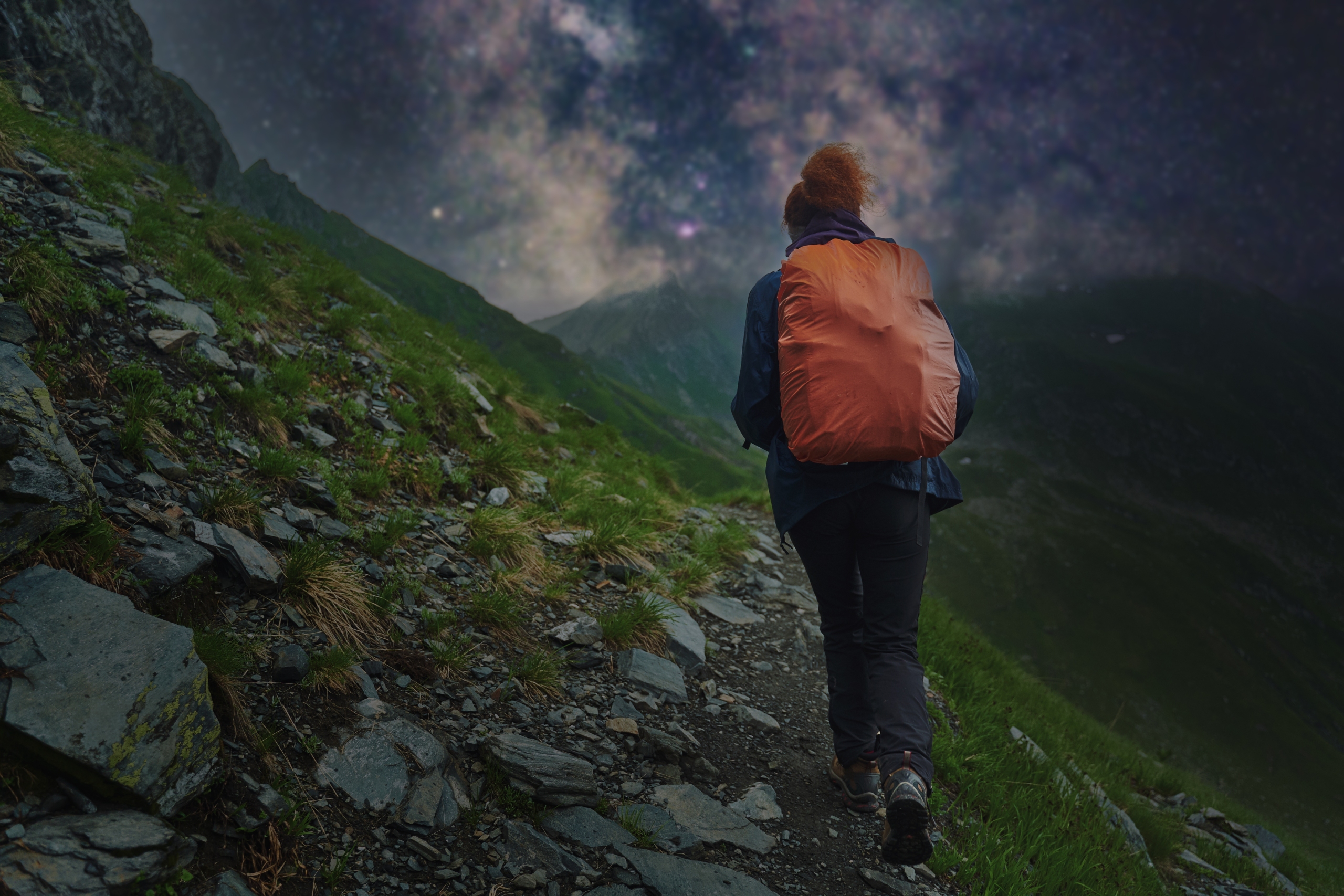“At night, the earth becomes sky.” — Rainer Maria Rilke
There is a hidden allure to walking at night. The world transforms, time slows, and sounds fade into the breath of the wind. The pilgrim, immersed in darkness, becomes acutely aware of their own footsteps. Every movement is more deliberate, every thought more vivid.
Walking under the stars is not just a practical choice to escape the heat of the day—it is an ancient experience, a ritual that transcends cultures and eras. It is the path of mystics, travelers, and seekers of truth.
Yet, the night is dual in nature. It holds both silence and mystery, tranquility and uncertainty. To walk in darkness is to confront fears, relinquish control, and trust in something greater.
The night as an inner space
By day, the world is clear and defined. The sun illuminates everything, edges are sharp, and directions are obvious. But at night, certainty dissolves. Shadows shift, boundaries blur, and navigation requires intuition. The night is a time of reflection, transformation, and surrender.
In psychology, night is often associated with the unconscious. Carl Jung spoke of the shadow—the hidden aspects of the self that daylight suppresses but which emerge in silence and darkness. To walk at night is to walk within oneself, each step an internal dialogue, a confrontation with fears and desires long buried.
In spiritual traditions, night is often the time of revelations. Moses receives the tablets of law on Mount Sinai in darkness. Jesus prays in Gethsemane under the night sky. Sufi mystics seek divine connection in nocturnal rituals.
Walking at night becomes an act of faith—not only religious, but existential. It is about trusting the path, one’s intuition, and the subtle light that continues to guide, even in the darkness.
The Timeless Appeal of Night Journeys
Humans have always walked at night. Ancient traders on the Silk Road traveled under the stars to escape the scorching heat of the desert. Nomadic cultures used constellations as maps, navigating vast landscapes without the need for physical trails. Also medieval pilgrims heading to Santiago de Compostela often walked the final stages by moonlight, following the Milky Way—known as the Camino de Santiago in the sky.
Even today, night walking retains a certain magic. The air is cooler, fatigue seems to fade, and thoughts flow more freely. The senses sharpen: hearing picks up sounds imperceptible during the day, smell detects scents long ignored, and vision learns to adapt to the subtle gradients of darkness.
But it’s more than just perception. The brain itself shifts gears. The sympathetic nervous system, dominant during the day, gives way to the parasympathetic system, which governs relaxation. Heart rate slows, the mind quiets, and walking becomes a moving meditation.
The risks of the night: Fear and reality
Yet night is not only beauty and silence—it is also uncertainty and vulnerability. In darkness, the unknown looms larger. An unexpected sound, a shifting shadow, a disappearing path—each can stir a primal sense of unease.
The fear of the night is ancient, hardwired into human survival instincts. Long ago, darkness was the realm of predators, and fire was the only protection. Today, the dangers are different, but the sense of alertness remains.
To walk at night is to accept this fear—not to eliminate it, but to move through it. It is an exercise in trust—in one’s senses, one’s instincts, and the path itself.
Precautions help: carrying a good flashlight, knowing the route, avoiding unsafe areas. But the true challenge is internal. It is the ability to remain in the darkness without being overwhelmed by it. It is the realization that night is not an enemy but a necessary part of the cycle—that dawn always comes.
The transformation of walking in darkness
Many pilgrims speak of unforgettable moments experienced on night walks: a sky filled with stars, appearing closer than ever; the muffled sound of footsteps on soft earth; a sudden encounter with a nocturnal animal, caught in shared solitude.
But the real transformation happens within. Walking in darkness teaches trust, surrender, and the ability to find security not in certainty, but in experience itself.
Much like in life, the road is not always clearly visible. At times, progress requires slow, uncertain steps, guided only by the faintest glimmers of light. And yet, the journey continues. Each step moves forward—toward something, toward somewhere, toward oneself.
Perhaps this is why those who have walked at night carry with them a quiet sense of peace. Because they have learned that darkness is not the absence of light, but a space in which to learn to see differently.





